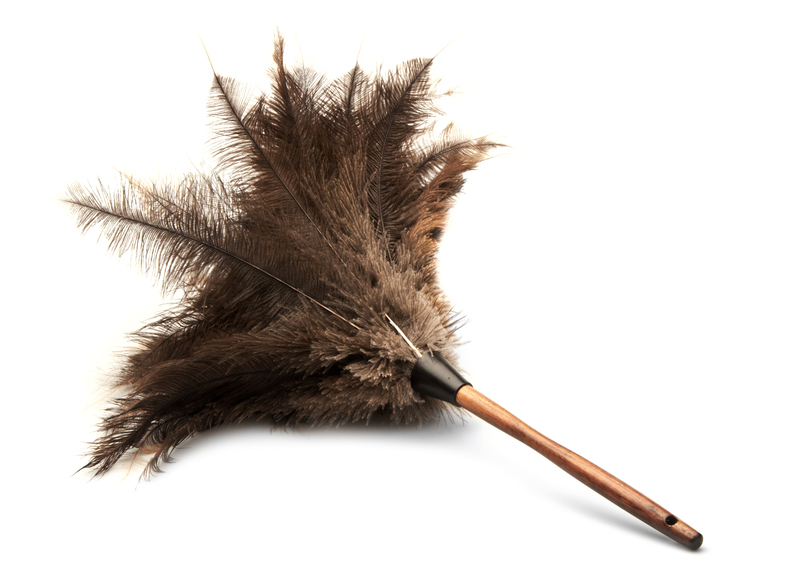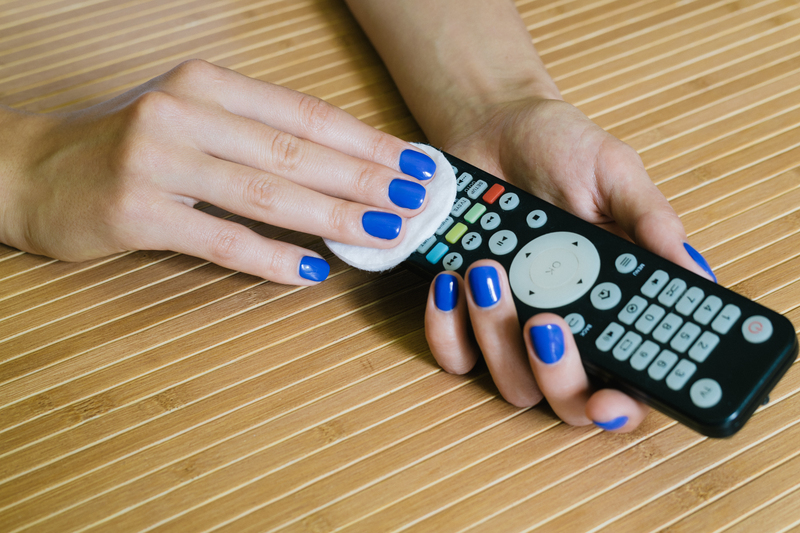Proven Methods to Wash Velvet Curtains and Preserve Their Luxurious Appearance
Posted on 02/06/2025
Proven Methods to Wash Velvet Curtains and Preserve Their Luxurious Appearance
Velvet curtains are synonymous with elegance, sophistication, and warmth. Their rich texture and vibrant sheen can instantly elevate the look of any room. However, maintaining their plush appearance requires special care, especially when it comes to cleaning. Mistakes in the washing process can damage the fibers, cause unsightly marks, or even ruin the curtain's distinctive luster. In this comprehensive guide, we detail proven methods to wash velvet curtains and preserve their luxurious appearance for years to come.
Understanding Velvet: Why Special Care Is Required
Velvet is a fabric with a dense pile of evenly cut fibers that have a smooth nap. Originating from silk, today velvet can be made from cotton, polyester, rayon, or a blend. The delicate structure that gives velvet its famous softness also makes it vulnerable to crushing, matting, or watermarks if not washed correctly.
- Natural velvet (e.g., silk or cotton): Often more delicate and sensitive to moisture and agitation.
- Synthetic velvet (e.g., polyester): More durable but still requires gentle handling.
- Blended velvet: Offers a balance of softness and resilience, but still benefits from special care.
To maintain the vibrancy and richness of velvet curtains, choosing the appropriate cleaning method is paramount.

How Often Should You Clean Velvet Curtains?
Before diving into the steps for washing velvet curtains and maintaining their appearance, it's important to know how frequently you should clean them. Over-washing can weaken fibers, while not cleaning often enough allows dust and contaminants to settle deep in the fabric.
- **Regular dusting or vacuuming:** Every 2-4 weeks
- **Spot cleaning:** As soon as spills occur
- **Deep cleaning or washing:** Every 6-12 months, depending on the environment
Main Methods to Wash Velvet Curtains While Preserving Luxury
When considering washing velvet curtains, choose the least invasive method first. Let's explore the top proven approaches for cleaning velvet drapes while maintaining their elegance:
1. Regular Maintenance: Dusting and Vacuuming
Prevention is better than cure. Before any washing, the key to preserving the luxurious appearance of velvet curtains is regular maintenance. Velvet tends to attract and hold onto dust and tiny particles, which can dull its sheen over time.
- Use a soft-bristle brush or a special upholstery attachment on your vacuum cleaner.
- Brush or vacuum in the direction of the nap to avoid crushing the pile.
- Don't press too hard: Gentle strokes are enough to pick up most dust.
Tip: Once a month, let the curtains breathe by shaking them outside, weather permitting.
2. Spot Cleaning Velvet Curtains
Immediate attention to spills or stains can prevent them from setting. When spot-cleaning velvet curtains:
- Blot, don't rub: Use a soft white cloth or paper towel to carefully blot up spills, pressing gently.
- Test a hidden patch first: Before applying any cleaning product, test it on an invisible area of the curtain to prevent discoloration or damage.
- Create a mild cleaning solution: Mix a few drops of mild dish soap with cool distilled water. Distilled water is recommended to avoid mineral stains.
- Apply sparingly: Dip a clean sponge or microfiber cloth into the solution, wring it out thoroughly, and dab gently onto the stain.
- Remove soap residues: Use another cloth dampened with distilled water to blot the area and remove any remaining soap.
- Dry correctly: Blot with a dry, absorbent towel, then let air-dry completely. Avoid direct sunlight to prevent fading.
Never soak velvet--even synthetics can become misshapen when exposed to excess moisture.
3. Hand Washing Velvet Curtains: Step-by-Step
Hand washing is usually the safest home method for cleaning velvet drapes, especially those made of cotton or a synthetic blend. Always check the care label for any specific recommendations.
- Prepare the Curtain: Remove any hooks, rings, or hardware. Shake out loose dirt or dust.
- Fill a tub or basin with cold or lukewarm water: Never use hot water--it may cause shrinking or damage fibers.
- Add a small amount of mild detergent: Choose a detergent labeled as safe for delicates or wool. Avoid bleach or harsh chemicals.
- Gently immerse the curtain: Lightly agitate the water with your hand, submerging so the fabric gets wet evenly. Let soak for 15-30 minutes.
- Swish, don't scrub: Gently move the curtain in the water--*never wring, twist, or scrub*.
- Rinse thoroughly: Drain soapy water, then refill with clean, cold water to rinse away all detergent. Repeat until water runs clear.
- Remove excess water carefully: Press curtain between two towels to absorb extra moisture. Don't wring!
- Dry flat or hang with support: Lay curtain flat on a large towel, reshaping as needed. Alternatively, hang using wide, padded hangers so the weight is evenly distributed.
- Let air dry away from sunlight and heat: Velvet dries slowly, but avoid direct heat--this can crush the pile or cause fading.
- Brush the nap once dry: When fully dry, gently brush the nap with a soft-bristle brush to restore its natural direction and texture.
4. Machine Washing Velvet Curtains: Is It Safe?
Some modern velvet curtain fabrics can be machine washed--only if the label clearly says so. Machine washing is suitable for many synthetic velvets, but always double-check to avoid disappointment.
- Use a gentle or delicate cycle with cold water. Never use hot water.
- Place curtains in a mesh bag or pillowcase to prevent friction and snagging.
- Select a mild, liquid detergent; powder detergents may leave residues.
- Avoid fabric softeners or bleach, which can degrade the velvet fibers.
- Do not overload the machine: Velvet needs space to move gently.
- After washing, air dry flat or hang (supported), keeping out of direct sunlight and away from heat sources.
Warning: Even machine-washable velvet can lose its plushness if overdried or spun too harshly. Avoid tumble-drying; instead, use only the spin function to extract water and let air-dry naturally.
5. Professional Cleaning: When in Doubt
If your velvet curtains are silk, antique, lined with interlinings, or you simply feel unsure about home cleaning, take them to a reputable dry cleaner with experience handling velvet. This is the safest way to preserve the exquisite, luxurious appearance of velvet drapes that might be irreparably damaged by water or agitation.
Professional cleaning is also preferable for excessively stained, large, or custom-tailored velvet curtains.
Tips to Maintain Velvet's Richness After Washing
Cleaning is only part of the equation; preserving the sumptuous look and feel requires just a few important tips:
- Regularly brush the pile in the direction of the nap with a special velvet brush or soft clothes brush to keep it smooth and fluffy.
- Steam instead of ironing: If wrinkles form, gently steam the curtains. Hold a handheld steamer or the steam function of your iron several inches from the fabric. Never touch the velvet directly with a hot iron--it can flatten or burn the pile.
- Protect from direct sunlight: Extended exposure can cause fading. Use sheer curtains behind velvet, or rotate panels periodically for even wear.
- Avoid contact with oils or cosmetics which can stain and are difficult to fully remove.
- Store velvet curtains carefully if not in use: Roll, rather than fold, to prevent permanent creases. Use acid-free paper to interleave if storing long-term.
FAQs on Washing Velvet Curtains and Maintaining Their Appearance
Can I iron velvet curtains?
No, do not press velvet curtains with a regular hot iron. The pile will be crushed, and the sheen permanently dulled. Instead, hang them in a steamy room or lightly steam with a handheld device to release wrinkles.
Is dry cleaning always preferable for velvet?
Not always, but it's safest for silk, antique, or heavily embellished velvet curtains. If the label says "dry clean only," don't attempt to wash them at home to avoid shrinking, fading, or other irreversible issues.
How do I restore pile after washing?
Once dry, gently use a soft brush to fluff the nap back into place. For crushed pile, gently steaming beforehand can help velvet return to its original texture.
Can velvet curtains shrink in the wash?
Yes, especially if made from natural fibers like cotton or silk and if washed in hot water or dried aggressively.
What's the best way to avoid water spots during washing?
Use distilled water for spot cleaning and gentle, even dampening during hand washing. Never soak velvet entirely for spot treatment, as uneven wetness is a prime cause of watermarks.

Key Takeaways: How to Clean Velvet Curtains and Keep Them Beautiful
- Inspect the care label first: Always follow manufacturer's instructions specific to your velvet curtain type.
- Start with gentle maintenance: Dust or vacuum regularly. Immediate spot cleaning of stains prevents setting.
- Hand wash for safest home method; machine wash only if the label allows.
- Dry naturally, avoid sunlight and heat, and never wring velvet.
- Fluff and brush the pile after cleaning to restore softness and sheen.
- Consider professional cleaning for delicate or expensive velvet drapery.
Conclusion
Velvet curtains represent a stunning investment in your home's decor. By following these proven methods to wash velvet curtains and preserve their luxurious appearance, you can keep them looking breathtaking for many years. Remember, the secret lies in gentle, mindful cleaning and consistent care. With the right approach, your velvet curtains will continue to enrich your living space with their timeless elegance.




